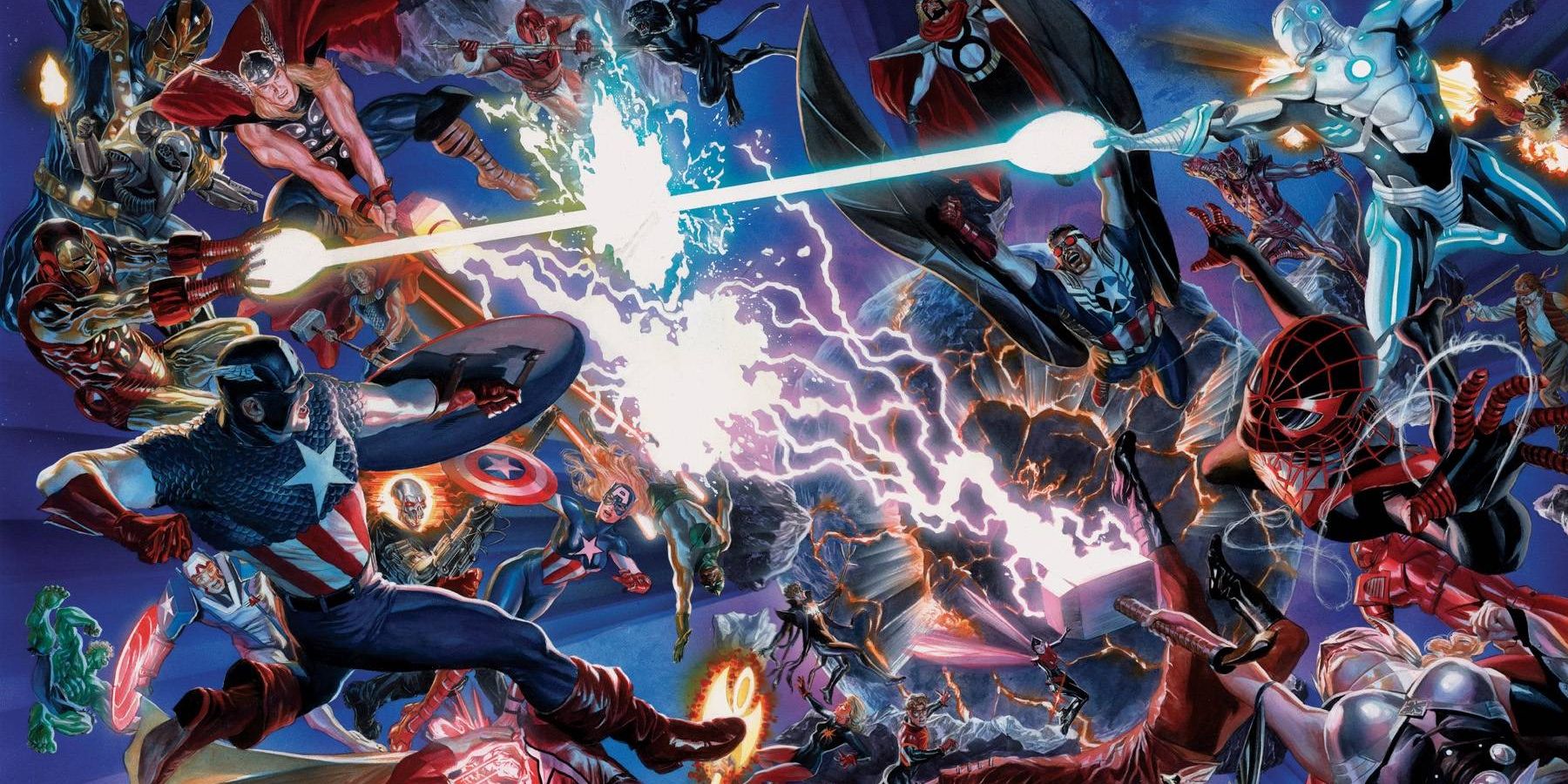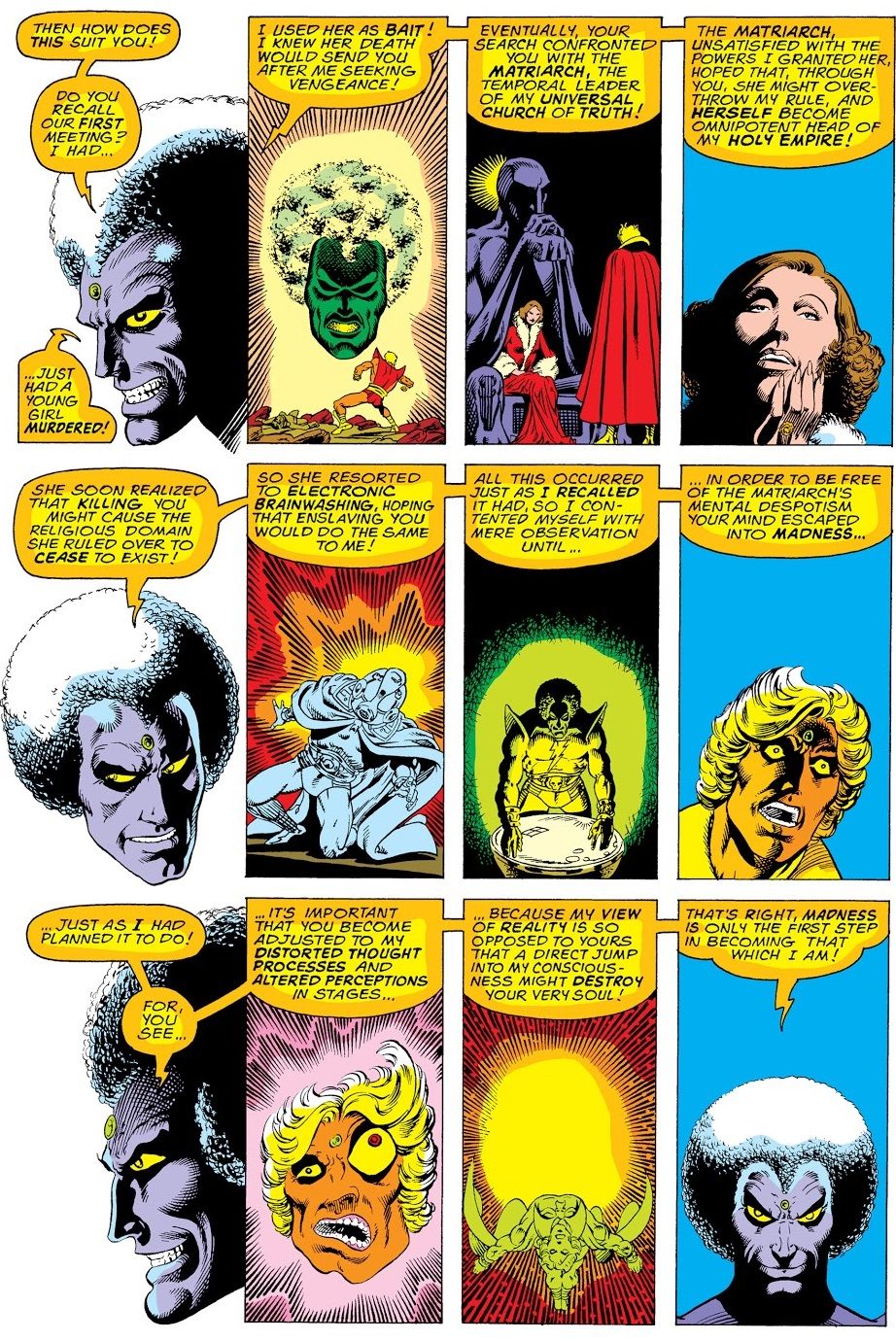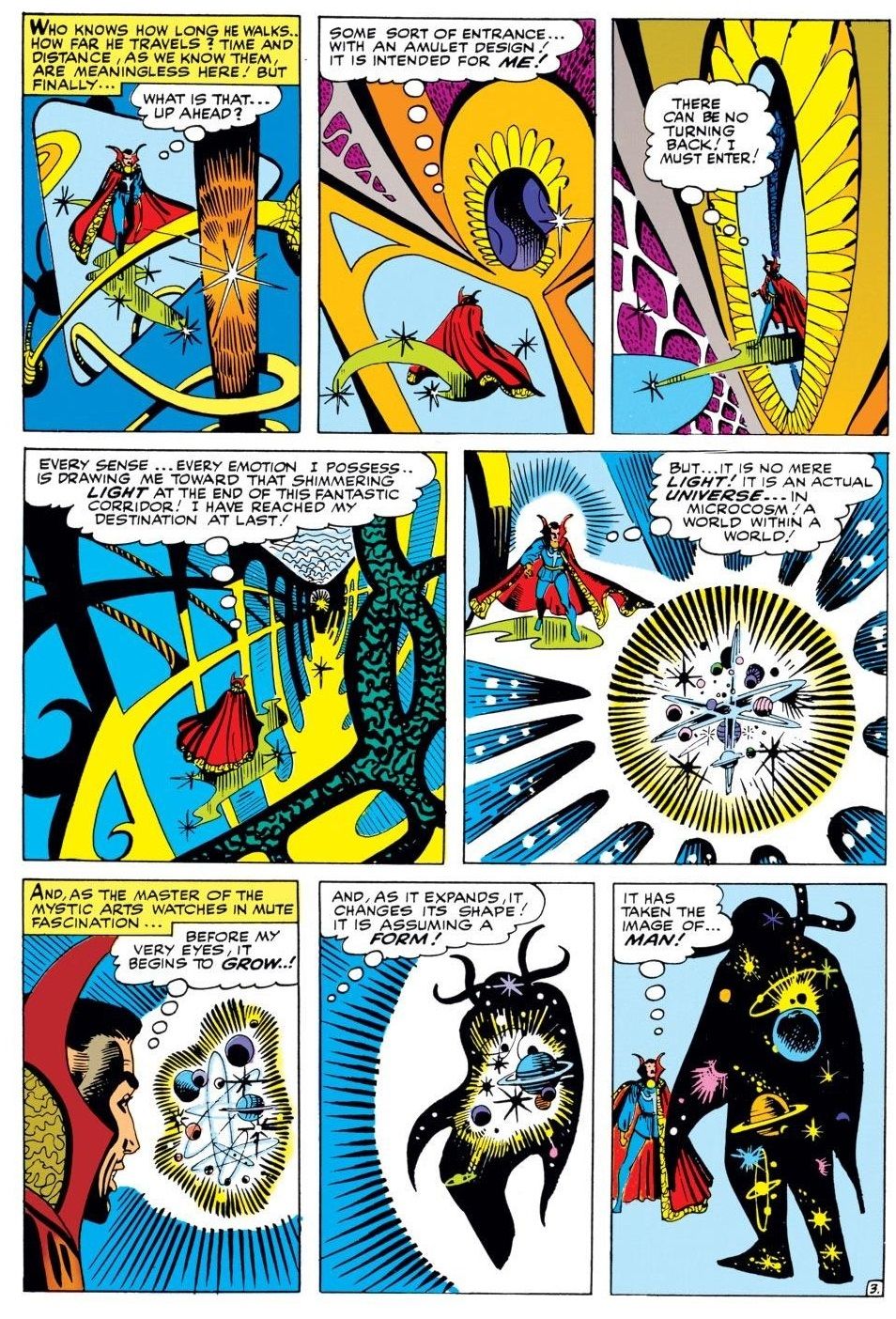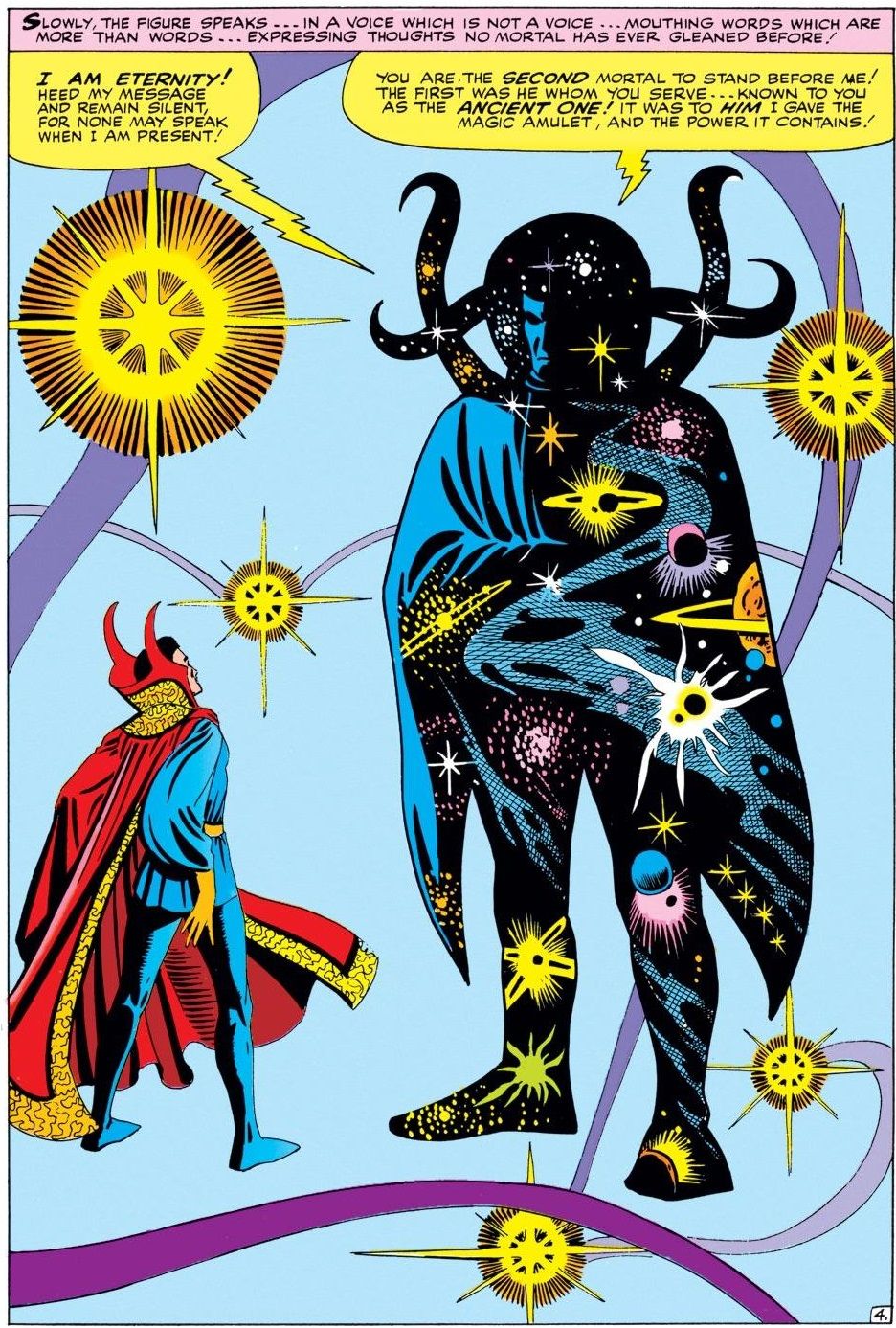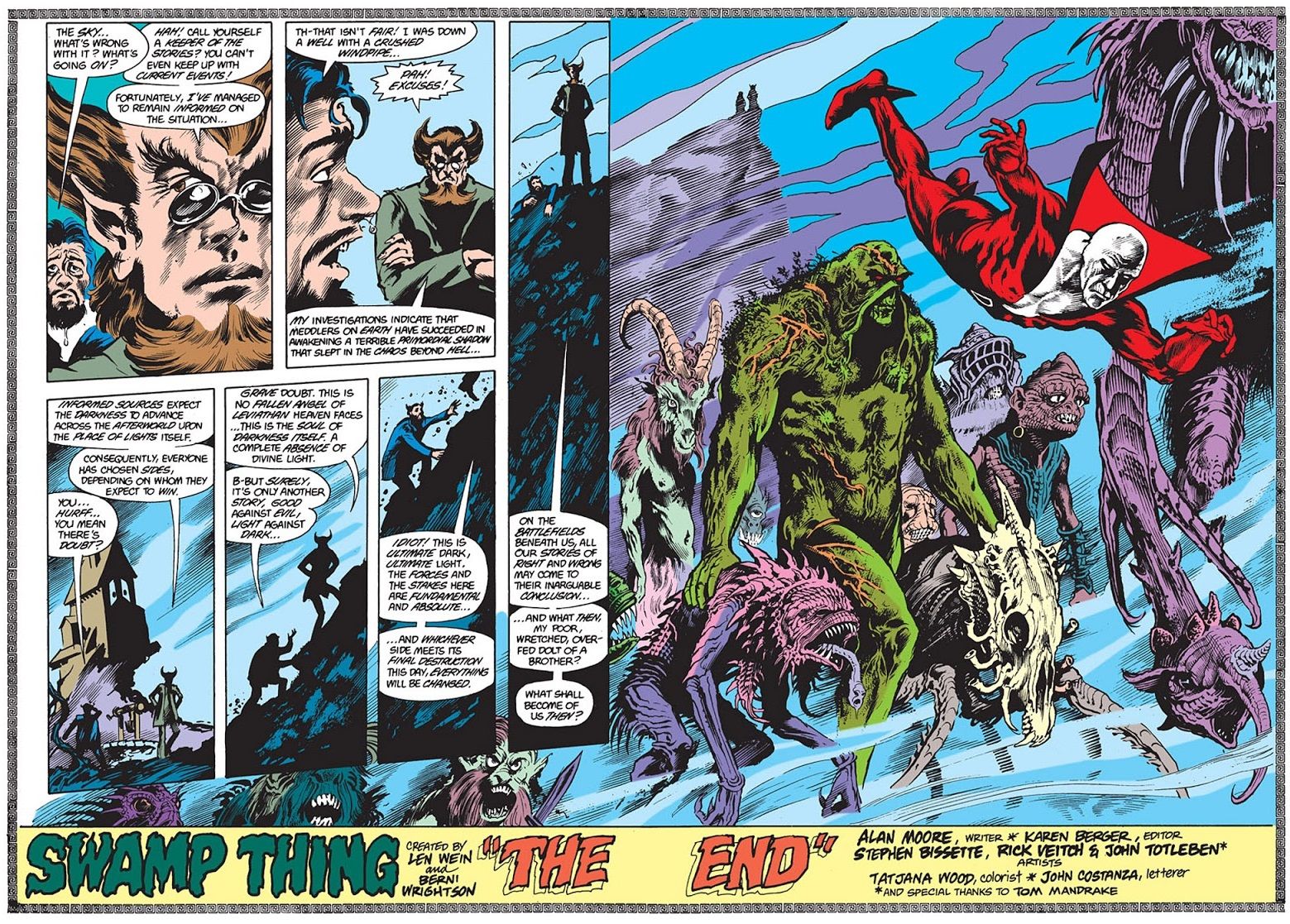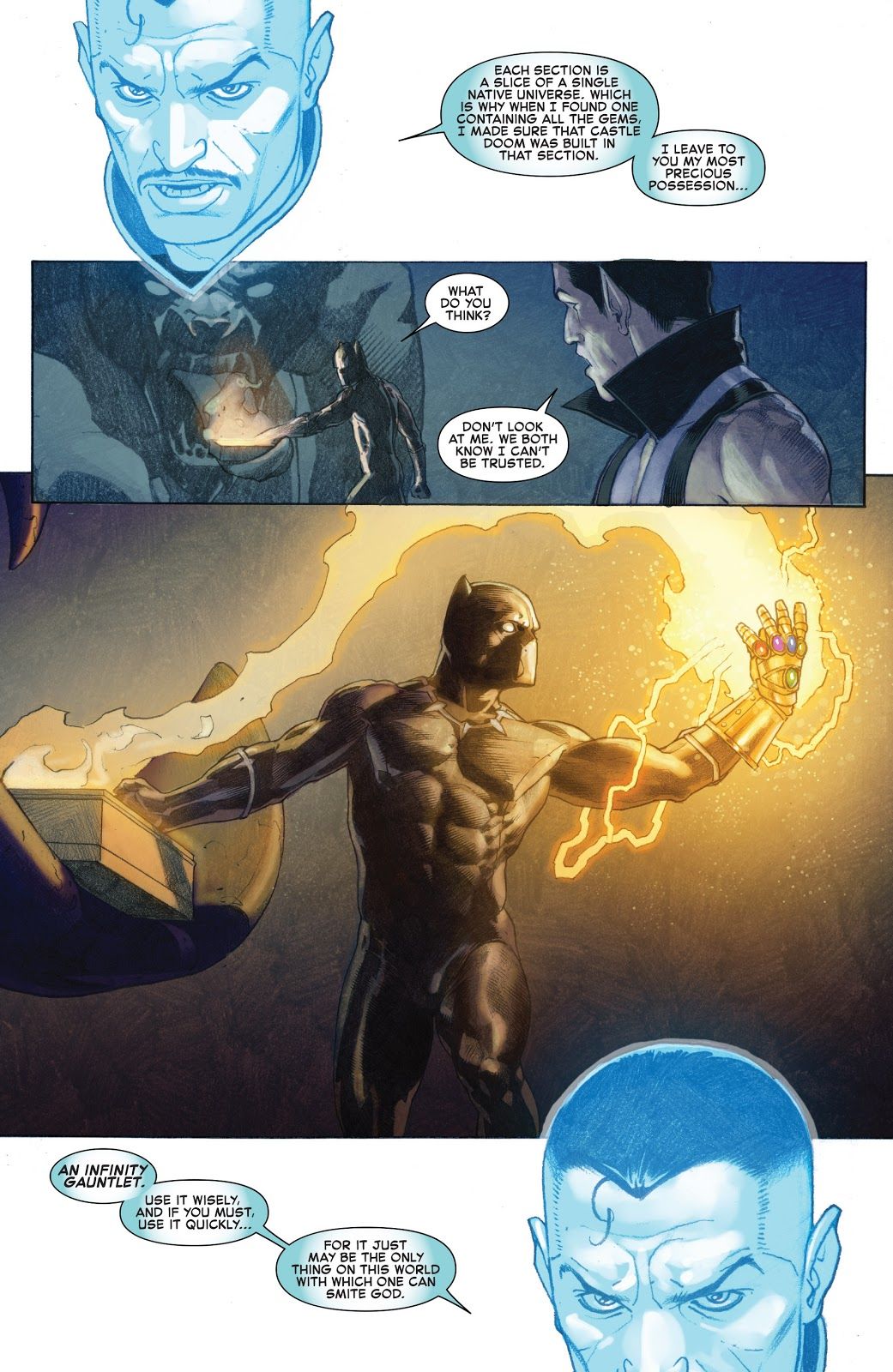Today, we continue our countdown of your picks for the greatest comic book storylines of all-time with #52-49.
You voted (over 1,000 ballots cast and a little bit more than the last time we did this countdown) and you all sent in ballots ranking your favorite storylines from #1 (10 points) to #10 (1 point). I added up all of the points and here we are!
52. "The Magus Saga" by Jim Starlin, Al Milgrom and Steve Leialoha (Strange Tales #178-181, Warlock #9-11) – 202 points (2 first place votes)
When 1975 rolled around, Jim Starlin had already made a name for himself for his striking revamp of the floundering Captain Marvel title, mostly through bringing in a villain Starlin had invented a little while earlier on an Iron Man fill-in, Thanos.
The Darkseid-riff became a very formidable foe for Captain Marvel, and the book gained a great deal of critical acclaim. Starlin had just left the book after finishing up the “Thanos Saga” in the title.
He was not done, however, with cosmic stories. Taking the same approach he had used with Captain Marvel (take over a minor character and then do whatever he wanted with it), Starlin began using the little used Adam Warlock in the lead story in Strange Tales.
When this work was later reprinted in 1992 (after already being reprinted in the 1980s), it was hyped as “Before the Infinity Gauntlet, there was Warlock!” and really, that’s what this was – beginning in Strange Tales #178 and staying in that book for a few issues before going over to Warlock’s own title (which had gone belly-up a few years earlier, but was continued with #9 for Starlin’s story), Starlin introduced many of the same characters and ideas that he would later re-visit in the Infinity Gauntlet.
Pip the Troll and Gamora (“The most dangerous woman in the universe”) both made their debuts here, as compatriots of Adam Warlock as he tried to stop the Universal Church of Truth. This tyrannical religious institution was led by the Magus, who turned out to be the evil future self of Adam Warlock himself!
Eventually, Thanos came into the picture, as well, giving him probably his most prominent storyline at the time, as we get to see the somewhat anti-hero nature of Thanos that Starlin liked working with.
The whole thing wrapped up nicely with a clever idea by Starlin and a bold sacrifice by Warlock that would later be re-visited when Starlin drew his cosmic stories to a close in 1977 (of course, he would then bring them all back in the early 1990s for Infinity Guantlet).
Starlin’s Magus storyline in Warlock was highly acclaimed at the time – Starlin was trying stuff and making allegories about religion and politics that you just didn’t see in superhero comics of the 1970s, and the stories hold up well still today.
51. “The Eternity Saga” by Steve Ditko, Stan Lee and Denny O'Neil (Strange Tales #130-146) - 206 points (2 first place votes)
Pretty early on, it was becoming clear that the ten or so pages that Steve Ditko had to work with in every issue of Strange Tales wasn't getting the job done anymore, so he slowly began to take a larger approach to his storytelling, telling more and more serialized works until he finally broke out with his epic 17-part final storyline during his run on Doctor Strange (Stan Lee scripted most of this run, but Denny O'Neil finished it out).
The main gist of the story is that Doctor Strange finds himself stuck against his two greatest enemies, Dormammu and Baron Mordo, teaming up. Sensing that he is screwed, he decides to seek out Eternity itself to help him. This leads to some of the most surreal visual work of the era. This is the sort of thing that made Doctor Strange such a cult classic among college students of the 1960s...
And Eternity itself, of course, is breathtaking...
It was the stuff that launched a thousand black light posters. Not only that, though, but Ditko was a master at balancing both the larger narrative while making each snippet of the larger narrative work on its own. It's a remarkable story. I've heard it referred to as an adult Wizard of Oz story, and I think that that works pretty well as a description.
50. “American Gothic” by Alan Moore, Stephen Bissette, John Totleben, Rick Veitch, Stan Woch, Ron Randall, Alfredo Alcala and Tom Mandrake (The Saga of the Swamp Thing #37-38, 42-45, Swamp Thing #39-41, 46-50) – 209 points (4 first place votes)
American Gothic involves the introduction of John Constantine, and what that meant for Swamp Thing.
Essentially, Cosntantine works as a sort of plot driver for the series of stories that make up “American Gothic.”
An evil South-American magic cult named the Brujeria are using the Crisis on Infinite Earths to help them take over the supernatural arena, and as part of their plot, they began having all sorts of evil events take place across America. Constantine manipulates Swamp Thing into taking down these threats.
Eventually, it all leads to basically one big ol’ fight between good and evil, and literally the Ultimate Darkness against the Ultimate Light.
There are a series of artists at work during this storyline – the standard brilliance of Stephen Bissette and John Totleben, but also impressive work from Rick Veitch and Stan Woch on pencils.
Moore handled the slow build towards issue #50 about as well as any writer has ever handled a build to a “big” issue number – this is a storyline without being a strict storyline (for most of the story, at least).
The final battle in #50, though, is given all the trappings you would expect from a “big” issue, with Moore playing with the vast history of DC Comics and their supernatural characters.
Moore stayed on the title for a little while longer (and did some excellent work), but in many ways, this was the capper to his Swamp Thing run.
49. "Secret Wars" by Jonathan Hickman, Esad Ribic and Ive Svorcina (Secret Wars (2015) #1-9) - 213 points (3 first place votes)
I tend to believe that when people voted for "Secret Wars," they were really voting for the overall Jonathan Hickman-penned story, "Time Runs Out" plus "Secret Wars." I don't know that for sure, of course, but since barely anyone voted for "Time Runs Out" and "Secret Wars" got a lot of votes, I suspect that to be the case. "Secret Wars" was the culmination of a long storyline that began in the very first issue of Jonathan Hickman's New Avengers run. That run introduced the concept of Incursions, where a hole in the Multiverse led to an alternate version of Earth showing up and it became a question of "What do you do if another Earth shows up and it is a matter of either destroying the other Earth or letting it destroy our Earth?"
Captain America was brought into the Illuminati and he agreed to destroy the first Earth, but then he could not do it any further. The Illuminati then wiped his memory, so that they could continue to come up with solutions for the Incursions. They, too, though, decided not to destroy any other planets. Namor, though, found out about this and decided that that was foolish. He then formed the Cabal, with Maximus and Thanos, and they began destroying all of the other worlds that would come up in other Incursions, until there were only a dozen or so realities left standing.
Around this time, Captain America regained his memories and he declared the Illuminati to be enemies of the state. Finally, one last world showed up for the Incursion, the Ultimate Universe version of the Earth. This time, the Ultimate Universe saved their world and the two worlds collided. This led to the creation of a gigantic Battleworld, where the various realities were all merged together. They were all held together by Doctor Doom, who had gained the power of omnipotence from the Molecule Man, and Doom saved as many people as he could by turning the destroying realities into one big one.
Most people on the original Earth were killed, but a handful of heroes made it to an arc, of sorts, where they stayed in suspended animation for 8 years. The Cabal were also put into suspended animation. They came back out after 8 years, at which point Doom had been "god" for all that time.
The surviving heroes then had to work with the surviving members of the Cabal to take down Doom, using whatever items that they could use, like Namor and Black Panther finding out some weapons to fight Doom...
In the end, though, it came down to Reed Richards versus Doctor Doom, as it always does, but in this instance, Doom finally admits that Reed is a better man for the job than he is, and Reed Richards helped to re-form the Marvel Universe, just like how he helped form it in the first place in 1961.

